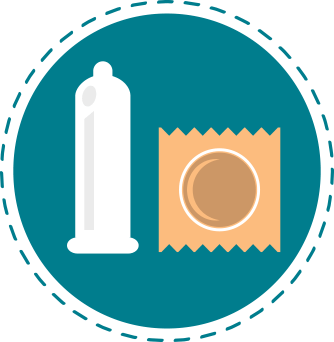
Preventable And Curable
With Early Screening, Cervical Cancer
Can Be Prevented And Treated

January is Cervical Cancer Awareness Month. Join us in our quest to raise awareness about cervical cancer by showing your support to our #ISupportTeal profile frame curated on Facebook.
Here’s how you can change your profile picture along with the frame:

Vaginal Bleeding Between Periods | Acute Pain In The Pelvic Region
Pain During And After Intercourse | Abnormal Or Blood-like Vaginal Discharge


It is the most common type where the cancer starts on the outside cells of the cervix.

In this one, the cancer starts in the lining of the uterus and cervical glandular cells. It is comparatively rare.

HPV DNA tests can find any of the high-risk types of HPV that are most commonly found in cervical cancer.[8]

Routine Pap tests help detect cancer early and even check for precancerous conditions. The frequency of tests will depend on the age, immunity and other factors.

An HPV vaccine reduces the risk of cervical cancer as it protects women from some of the high risk type of HPV responsible for about 70% of cervical cancers. HPV infection can lead to abnormalities in the cervical cells that can later become cancerous. This can happen over a period of a few years to more than a decade. There is a need to detect these abnormal cancer cells or presence of HPV infection before it develop into cancer. A minor procedure can be done to remove these abnormal cells thus preventing cancer. Screening can be done by means of HPV DNA testing or Pap smear.

Use condoms and limit your sexual partners to reduce your risk of STIs and HPV infections.

Surgery and radiation helps cure cervical cancer. If detected early, the 5 year survival rate for localised cervical cancer is about 92%.[9]
1. http://gco.iarc.fr/today/data/factsheets/cancers/23-Cervix-uteri-fact-sheet.pdf
2. https://gco.iarc.fr/today/data/factsheets/populations/356-india-fact-sheets.pdf
3. https://gco.iarc.fr/today/data/factsheets/populations/356-india-fact-sheets.pdff
4. https://www.cancer.net/cancer-types/cervical-cancer/symptoms-and-signs
5. https://www.cancer.net/cancer-types/cervical-cancer/risk-factors
6. https://www.cancer.net/cancer-types/cervical-cancer/introduction
7. https://www.cancer.net/cancer-types/cervical-cancer/introduction and https://www.cancer.net/cancer-types/cervical-cancer/types-treatment
8. https://www.cancer.gov/types/cervical/pap-hpv-testing-fact-sheet
9. https://www.cancer.org/cancer/cervical-cancer/detection-diagnosis-staging/survival.html